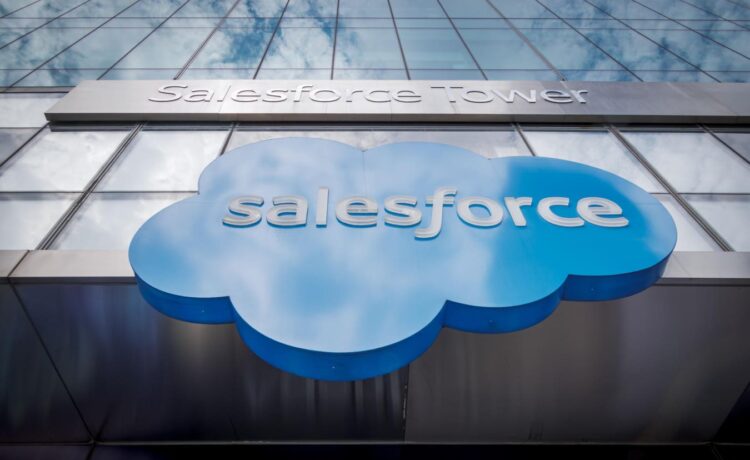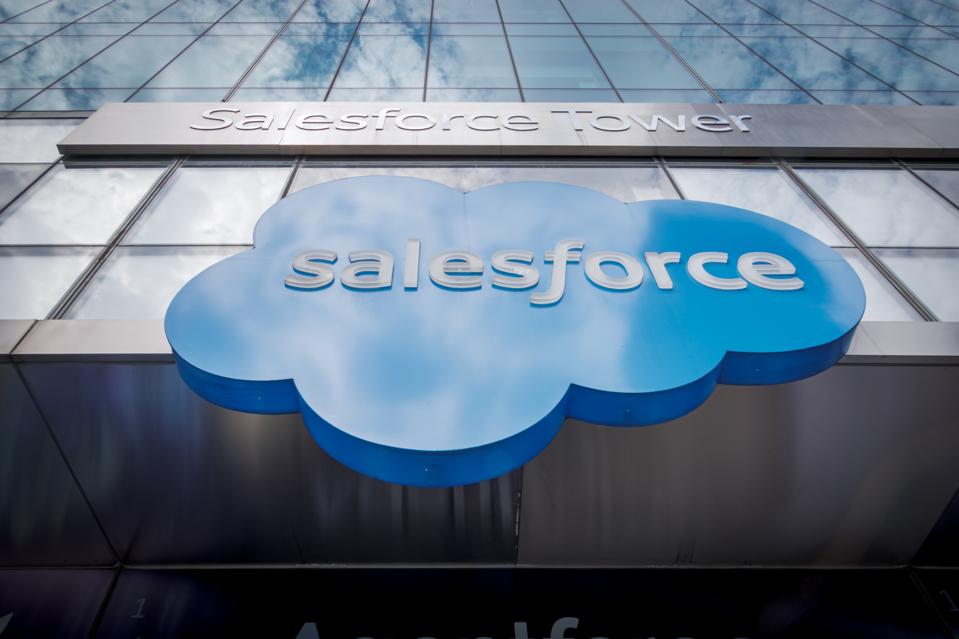MANHATTAN, NEW YORK, UNITED STATES – 2025/09/23: Sign at the entrance to the Salesforce offices in Midtown Manhattan. (Photo by Erik McGregor/LightRocket via Getty Images)
LightRocket via Getty Images
Salesforce stock (NYSE: CRM) ought to be on your radar. Here’s why – it is presently trading within the support range ($233 – $257), prices at which it has rebounded significantly in the past.
Over the past decade, the stock attracted buying interest at this level on 5 occasions and subsequently produced an average peak return of 24.2%.
Beyond the technical setup, Salesforce has recently delivered strong second-quarter fiscal 2026 results (reported in early September), beating analysts’ expectations for both revenue and earnings per share. The company also announced a quarterly dividend, underscoring its commitment to shareholder returns.
Strategically, Salesforce continues to focus heavily on its AI and Data Cloud offerings (Agentforce) to drive future growth, even while management is reiterating its commitment to operating discipline and profitability targets.
However, is the price movement sufficient on its own? It certainly is beneficial if the fundamentals are solid. Read Buy or Sell CRM Stock to determine how compelling this buying opportunity may be.
That represents one perspective on stocks. Trefis High Quality Portfolio evaluates a lot more and aims to minimize stock-specific risks while providing upside potential. It has comfortably outperformed its benchmark—a combination of the S&P 500, Russell, and S&P MidCap indexes—and has achieved returns exceeding 91% since its inception. Why is that? As a group, HQ Portfolio stocks provided better returns with less risk versus the benchmark index; less of a roller-coaster ride, as evident in HQ Portfolio performance metrics. Separately, see – The GOOGL Stock Shareholder Jackpot
Here are some quick data points on CRM:
- Revenue Growth: 8.3% LTM and an average of 10.5% over the last 3 years.
- Cash Generation: Almost 31.6% free cash flow margin and a 21.2% operating margin LTM.
- Recent Revenue Shocks: The minimum annual revenue growth for CRM over the last 3 years was 8.0%.
- Valuation: CRM is valued at a PE multiple of 35.2
- Opportunity vs S&P: In comparison to S&P, it offers a higher valuation, greater revenue growth, and superior LTM free cash flow and operating margins
Salesforce delivers technology for customer relationship management and a platform that fosters connected experiences across sectors, including financial services, healthcare, and manufacturing, around the globe.
What Is Stock-Specific Risk If The Market Experiences a Downturn?
Salesforce is also susceptible to major declines. During the Global Financial Crisis, its value dropped by about 70%. The Inflation Shock resulted in a near 59% decrease. Similarly, both the Covid selloff and the 2018 correction were significant, with dips of approximately 36% and 25%, respectively. Thus, while Salesforce boasts strong fundamentals, history indicates that considerable declines can occur when the market turns unfavorable.
Also, look at our take on – Salesforce.com’s Strong Fundamentals Are Clouded By Growth Concerns
Nevertheless, the risk isn’t confined to significant market crashes. Stocks can decline even when markets are performing well – consider events like earnings announcements, business updates, and changes in outlook. Read CRM Dip Buyer Analyses to understand how the stock has rebounded from sharp declines previously.
Remember, investing in a single stock without comprehensive analysis can be risky. Consider the Trefis Reinforced Value (RV) Portfolio, which has outperformed its all-cap stocks benchmark (combination of the S&P 500, S&P mid-cap, and Russell 2000 benchmark indices) to produce strong returns for investors. Why is that? The quarterly rebalanced mix of large-, mid-, and small-cap RV Portfolio stocks provided a responsive way to make the most of upbeat market conditions while limiting losses when markets head south, as detailed in RV Portfolio performance metrics.



